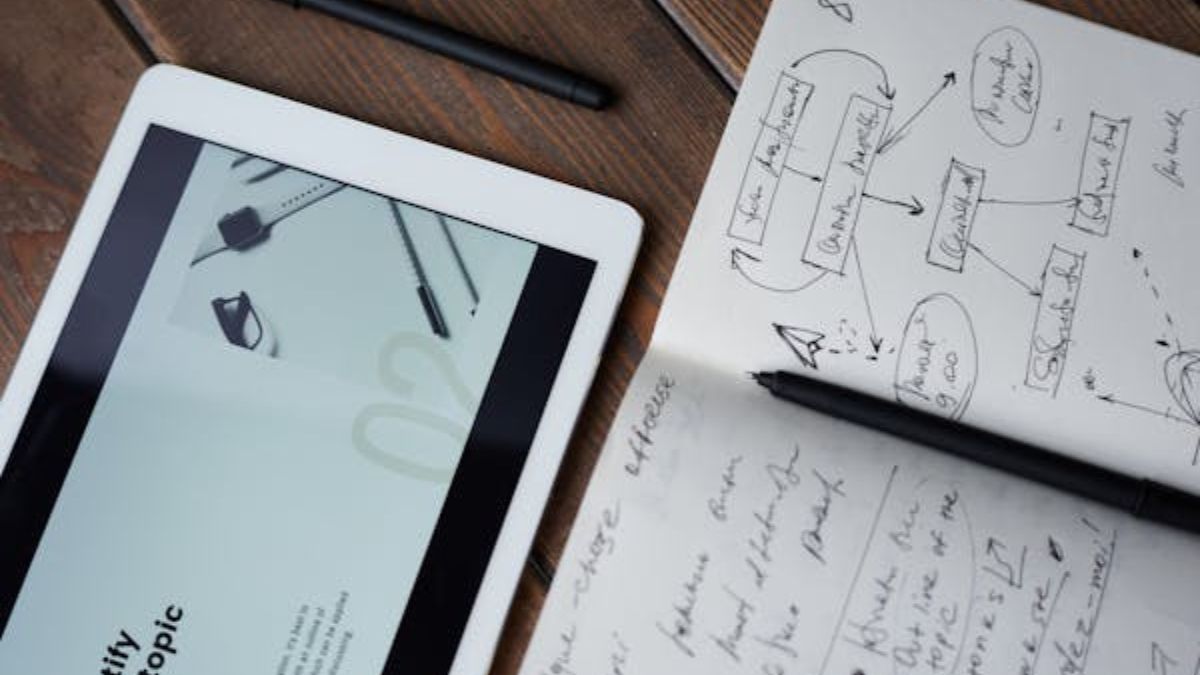Education
Why Book Lovers Can’t Get Enough of Books a Million

Step into a world where the smell of fresh pages beckons you, where stories come alive in every aisle, and where book lovers find solace among shelves stacked with literary treasures. Welcome to Books a Million – a haven for those who believe there’s no problem that can’t be solved with a good book in hand. Join us as we delve into what makes Books a Million so irresistible to bibliophiles everywhere!
Overview of Books a Million
Books a Million, affectionately known as “BAM,” is more than just a bookstore – it’s a literary paradise that caters to all kinds of readers. With a vast selection of books spanning genres from fiction to non-fiction, children’s books to bestsellers, BAM ensures there’s something for everyone. The store prides itself on offering not only books but also an array of gifts, collectibles, and stationery items.
The warm ambiance invites visitors to browse leisurely through the aisles while discovering new authors or revisiting old favorites. From cozy reading nooks to bustling cafe areas perfect for book club meetings or solo study sessions, Books a Million fosters an environment that celebrates the joy of reading. Whether you’re hunting for the latest bestseller or seeking out niche titles, BAM promises an enriching experience that keeps book lovers coming back time and time again.
Shopping Experience at Books a Million
Stepping into a Books a Million store is like entering a book lover’s paradise. Shelves upon shelves of books greet you, inviting you to explore the vast literary world within their pages. The soft lighting and cozy seating areas create a welcoming atmosphere that encourages visitors to linger and get lost in the magic of storytelling.
The layout of the store is thoughtfully organized, making it easy to navigate through different genres and sections. Whether you’re searching for the latest bestseller or an old classic, Books a Million has something for every reader’s taste. The staff are knowledgeable and passionate about literature, ready to offer recommendations or help you find exactly what you’re looking for.
As you browse through the aisles, it’s hard not to feel inspired by the endless possibilities that books offer. From fiction to non-fiction, children’s books to cookbooks, there’s no shortage of options at Books a Million. The tactile experience of flipping through pages and discovering new stories adds an extra layer of enjoyment to your shopping trip.
In addition to books, Book a Million also offers unique gifts, stationery items, puzzles, and games that cater to all ages and interests. It truly is more than just a bookstore – it’s a haven for anyone who appreciates the written word in all its forms.
Books a Million Community
Book a Million isn’t just about books; it’s also about fostering a vibrant community of book lovers. The Books a Million Community brings together like-minded individuals who share a passion for reading and learning. It’s a place where discussions on favorite authors, genres, and book recommendations thrive.
Members of the Book a Million Community often participate in book clubs, author events, and other literary gatherings organized by the bookstore. These interactions not only enhance the overall reading experience but also provide an opportunity to connect with fellow bibliophiles.
Whether you’re looking to join a book club or simply engage in conversations about your latest read, the Books a Million Community offers a welcoming space for all types of readers. It’s more than just a bookstore – it’s a hub for building meaningful connections through literature.
Books a Million Store Locations
Book a Million has over 200 stores across the United States, making it a go-to destination for book lovers everywhere. Each location is meticulously designed to create a welcoming and cozy atmosphere where readers can get lost in their favorite books.
Whether you’re looking for the latest bestseller or a hidden gem, Books a Million’s store locations offer an extensive selection of titles to cater to every interest and genre. From fiction to non-fiction, children’s books to cookbooks, there is something for everyone at these stores.
The staff at Book a Million locations are passionate about literature and are always ready to recommend their favorite reads or help you discover something new. Their knowledge and enthusiasm add an extra layer of enjoyment to the shopping experience.
In addition to books, many store locations also feature coffee shops or seating areas where customers can relax and enjoy their purchases. It’s not just about buying books; it’s about creating an immersive experience that celebrates the joy of reading.
Featured Location: Gulf Shores
Nestled along the beautiful Gulf Coast, the Book a Million location in Gulf Shores offers book lovers a serene escape to indulge in their literary passions. The store’s inviting atmosphere welcomes visitors with shelves brimming with diverse genres and bestsellers.
As you step inside, the scent of fresh pages beckons you deeper into a world of imagination and knowledge. The cozy reading nooks provide a perfect spot to lose yourself in a captivating story or discover your next favorite author.
Friendly staff members are always on hand to offer recommendations or engage in discussions about the latest releases. Whether you’re seeking a thrilling mystery, heartwarming romance, or thought-provoking non-fiction, this Gulf Shores destination has something for every reader’s taste.
With regular events such as book signings and author meet-and-greets, the Books a Million in Gulf Shores fosters a sense of community among book enthusiasts. Soak up the coastal charm while browsing through endless rows of books at this beloved location by the sea.
Featured Location: Coastal Grand Mall
Nestled in the heart of Myrtle Beach, South Carolina, the Book a Million store at Coastal Grand Mall is a book lover’s paradise. As you step inside, you are greeted by shelves overflowing with bestsellers, classic novels, and niche reads. The cozy ambiance invites you to explore each aisle at your own pace.
The friendly staff members are always on hand to offer recommendations or help you find that elusive title you’ve been searching for. Whether you’re a fan of fiction, non-fiction, or children’s books, there is something for everyone here.
As you browse through the aisles, don’t forget to check out their selection of magazines, stationery items, and unique gifts perfect for any occasion. With regular author signings and events hosted right in the store, Coastal Grand Mall truly fosters a sense of community among book enthusiasts.
Escape into the world of literature at this vibrant Book a Million location and immerse yourself in stories waiting to be discovered.
Conclusion
As book lovers, the charm of Books a Million is undeniable. From their wide selection of books and cozy reading nooks to their engaging community events and welcoming store locations, it’s clear why readers can’t get enough of this beloved bookstore chain. Whether you’re browsing the shelves in Gulf Shores or exploring the aisles at Coastal Grand Mall, Books a Million offers an immersive experience that keeps customers coming back for more.
So next time you find yourself in search of your next literary adventure or simply craving some quality time surrounded by book, consider paying a visit to Book a Million. Who knows? You might just discover your new favorite read or meet fellow book enthusiasts who share your passion for all things literature. Happy reading!
Education
Boosting Sales in the Educational Sector With Bulk Journals

The educational sector is a hotspot for many businesses that sell school-related products. This includes stationery tools like paper, pens, and journals. Students, especially, love customized stationery. Not only that, but schools also often require standardized journals to be distributed to students. This is why the educational sector offers immense potential for businesses selling customized journals.
By understanding the buying cycles of educational organizations and offering competitive pricing, businesses can tap into bulk journals with the academic sector to make a proper profit.
Why Target Educational Institutions?
Schools and colleges have ongoing needs for journals, planners, and notebooks. These tools are essential for student organization, academic planning, and teacher lesson preparations. Custom bulk journals tailored to the academic year’s structure or student preferences are in high demand.
Targeting schools ensures steady bulk orders and helps businesses establish long-term relationships with institutions. A reliable supplier becomes a go-to partner for yearly procurement needs.
Understanding Academic Buying Cycles
Educational institutions often operate on strict schedules for purchases. The academic buying cycle typically aligns with school terms and fiscal budgets. Key periods include:
- Summer and Early Fall: Schools prepare for the new academic year and order student supplies.
- End of the Year: Teachers and administrators stock up for the next term or purchase gifts for staff appreciation.
Businesses targeting this sector should plan marketing efforts and promotions to align with these cycles. Advanced planning also allows institutions to budget for larger purchases.
Bulk Pricing Structures for Schools
Educational institutions are budget-conscious and prefer suppliers offering bulk discounts. Competitive pricing structures can set businesses apart. Key considerations include:
- Tiered Discounts: Offering discounts based on the quantity purchased ensures schools save more when ordering larger orders.
- Customized Options at Lower Costs: Providing customization at reduced rates for bulk orders increases appeal.
- Subscription Models: Some schools benefit from annual contracts, guaranteeing recurring business for the supplier.
Being transparent about pricing and offering flexible payment terms can help build trust with school administrators.
Specialized Academic Planners and Student Journals
Tailoring products to the needs of schools can significantly boost sales. Two popular products for educational institutions include:
- Academic Planners: Designed for students and teachers, these planners include class schedules, assignment trackers, and school calendar pages. Businesses can customize them with the institution’s name, logo, and colors.
- Student Journals: Durable journals suited for daily use are students’ staples. Customizable covers and inspirational designs make them appealing to learners.
Adding features like pre-printed timetables or motivational quotes can enhance the value of these products.
Tips for Selling Bulk Journals to Educational Institutions
- Highlight Durability: Ensure journals are designed to withstand daily student use.
- Offer Samples: Free samples allow schools to assess quality before committing to a large order.
- Emphasize Customization: Schools appreciate journals tailored to their branding and academic needs.
- Be Accessible: Establish dedicated communication channels to handle queries from busy school administrators.
Key Takeaways
Selling bulk journals to educational institutions requires understanding their unique needs, academic cycles, and budget constraints. Businesses that offer tailored academic planners, competitive pricing, and high-quality products can build lasting relationships with schools. By aligning with educational priorities, suppliers can secure consistent orders and establish themselves as reliable partners in the academic world.
Education
The Benefits of Completing Court-Ordered Courses Online: Convenience and Compliance

Introduction
In today’s digital age, fulfilling court-mandated educational requirements has never been more accessible. Online courses designed for court orders offer a streamlined way for individuals to accomplish their legal obligations while accommodating their busy lives. This format not only promotes efficiency but also ensures compliance with court mandates. With the rise of digital education platforms, individuals can now complete court-ordered classes without the logistical challenges that traditional classroom settings might pose.
Convenience of Online Learning
One of the most significant advantages of completing court ordered classes online is the unparalleled convenience it offers. Whether you must take a course on anger management, substance abuse, or any other mandated topic, online platforms provide a user-friendly interface that can be accessed anytime, anywhere. This eliminates the need to commute to a physical location, saves time, and reduces the stress associated with travel.
The digital approach allows participants to integrate learning into their daily routines, ensuring they meet their legal requirements without causing significant disruptions to work or family commitments. This convenience is a key factor in promoting adherence to court orders, as individuals are likelier to engage with a program that fits seamlessly into their lifestyle.
Flexibility and Accessibility
Flexibility is another hallmark of completing court-ordered courses online. With 24/7 availability, these courses empower learners to choose when and where they study. This adaptability is especially beneficial for those with varying work schedules, caregiving responsibilities, or other personal commitments that make attending traditional classes challenging.
Online courses also cater to different learning preferences. Interactive modules, videos, and quizzes allow individuals to absorb material in ways that resonate best with them. This variety can enhance comprehension and retention, ensuring participants meet legal requirements and gain valuable insights and skills.
Ensuring Timely Compliance
Meeting deadlines is crucial when it comes to court-ordered education. Online courses are structured to support timely compliance, often including automated reminders and progress-tracking features that help participants stay on schedule. These tools add a layer of accountability, ensuring that individuals can continuously monitor their advancement through the course.
Additionally, online platforms often provide immediate access to completion certificates once the course is finished. This prompt delivery alleviates concerns about documentation, allowing individuals to present proof of compliance to the court without delay. As a result, participants can fulfill their legal obligations with confidence and peace of mind.
Structured Curriculum and Support
While flexibility is a significant advantage of online courses, their structured curriculum ensures that all relevant material is comprehensively covered. These courses are meticulously designed to address the court’s specific requirements, providing a transparent roadmap for participants to follow.
Moreover, online courses frequently include access to support resources, such as knowledge bases and customer service representatives, who can assist with technical issues or questions about the course content. This support network can help participants navigate any challenges, further facilitating the completion of their court-ordered programs.
Privacy and Confidentiality
Privacy is a significant consideration for individuals enrolled in court-ordered courses. Online learning platforms typically offer a layer of confidentiality that traditional classrooms may not. Participants can work through sensitive material in the comfort and privacy of their own homes without the potential stigma of attending in-person classes.
This private environment allows individuals to engage more openly with course content, fostering a more thorough understanding of the material and encouraging personal growth. Furthermore, online platforms often adhere to strict data protection policies, ensuring that personal information remains secure throughout the course.
Conclusion
In summary, completing court-ordered courses online presents several compelling advantages that make compliance both convenient and feasible. The flexibility, accessibility, and structured support that online platforms offer ensure that individuals can meet their legal obligations efficiently and with ease. As more people turn to digital solutions for their educational needs, online court-ordered courses continue to prove themselves as a reliable and effective means of achieving compliance while fostering personal development.
Education
Navigating School Changes: Practical Tips for a Smooth Transition Mid-Year

Deciding to change a child’s school mid-way through the academic year is a decision that can carry substantial weight for many families. This choice often involves multiple personal, academic, or situational reasons, ranging from relocation due to job assignments to seeking a more suitable educational setting for the child. For those considering transfering schools, the process can initially seem overwhelming. However, with strategic planning and robust support systems, the transition can become a rewarding and positive experience that academically and socially benefits the child. This comprehensive guide explores the reasons behind mid-year school changes and the various challenges families may encounter. It offers pragmatic steps to ensure students adjust smoothly and thrive in their new educational environments.
Why Change Schools Mid-Year?
Families often consider switching schools in the middle of the year for many reasons. A typical driver is a geographical relocation due to new job opportunities or changes in family dynamics that necessitate moving. Additionally, educational motivations play a significant role; parents might search for schools offering specialized programs, advanced academic courses, or a focus on particular disciplines such as the arts, sciences, or sports. These driving factors highlight families’ need to evaluate the alignment of a new school’s offerings with the student’s passions and academic goals.
Social and emotional factors also compel school changes. A child might face unsupportive environments such as bullying, insufficient resources for learning disabilities, or lack of social connection with peers. For these reasons, families may seek more supportive, inclusive, and nurturing environments where their children can thrive personally and academically.
Common Challenges Faced by Families
Transitioning to a new school halfway through the academic year is no small feat and can be accompanied by various logistical and emotional challenges. From organizing new daily routines and understanding a different curriculum to the administrative paperwork involved in enrolling in a new school, the logistical components can be fairly demanding. These challenges necessitate meticulous planning and time management from all family members involved.
The emotional impact on children cannot be understated. Leaving behind established friendships and familiar routines can be a source of stress and anxiety. Kids must acclimate to new social dynamics, establish relationships with new peers, and navigate varying educational expectations. Parents should strive to monitor their children’s emotional well-being closely, maintaining open dialogues to reassure them that they are supported and valued during this transition.
The Benefits of Switching Schools
While the process involves challenges, changing schools can be incredibly advantageous under the right circumstances. A new school may offer previously unavailable opportunities, such as access to specialized courses, extracurricular activities, or unique educational philosophies that align better with a child’s strengths and interests. It can allow children to rediscover their potential and explore subjects and hobbies they are passionate about. Narratives abound of children who have relocated mid-year only to find themselves in environments where they truly excel and connect with peers with similar aspirations. This new setting might stimulate personal growth and academic achievement, opening doors to pathways that were previously out of reach in their former schools.
Preparing for the Transition
Preparation is critical to a smooth school transition. It begins by thoroughly investigating prospective schools to understand their culture, educational standards, and available resources. Scheduling visits to the new school can also provide a sense of familiarity and comfort. During these visits, engaging with faculty and staff to address any curriculum differences and gauge the support systems available for students is beneficial.
Involving the whole family in discussions about the potential change helps everyone feel invested in the decision. By doing so, children can express their thoughts and feelings regarding the move, reinforcing family bonds and giving a sense of ownership over the future.
First Days in a New School
The first few days in a new school are a critical period for setting the tone of the transition. Encouraging children to participate in school events, athletic teams, or clubs that reflect their interests can help them find common ground with fellow students and promote a sense of belonging. This participation fosters new friendships, builds confidence, and improves social skills. Parents can aid this process by ensuring their children have positive daily interactions, discussing their school day openly, helping to highlight positive experiences and offering guidance on handling any challenges they may encounter.
Supporting Your Child Academically
Ensuring academic continuity is essential during this time of change. It requires understanding the new school’s academic expectations and identifying differences in curricula. Regular parent-teacher conferences can be instrumental in establishing a line of communication between parents and educators, helping identify areas where a student may need extra support or enhancement. At home, creating a structured learning environment that mirrors school habits aids in maintaining consistency and stability. Recognizing and celebrating academic efforts can inspire students to tackle new educational challenges positively.
Handling Emotional Adjustments
It’s crucial to address the emotional health of children during a school change. Children might exhibit signs of stress or resistance, which is normal. Parents should keep an open line of communication, listening to their child’s concerns and validating their feelings. Resources like therapy or counseling services are beneficial if needed, offering a secure environment for learners to examine their feelings and cultivate coping mechanisms. Support systems such as peer mentorship programs or counseling can reinforce positivity and self-esteem, ensuring children have the tools to acclimate successfully to their new environment.
Long-term Considerations
The transition doesn’t conclude immediately; it’s an ongoing process that requires continuous support and adjustment. Regular check-ins with your child regarding their academic progress and social interactions can help identify lingering challenges. In summary, although switching schools mid-year can be demanding, it also offers a unique chance for children to embrace new experiences and achieve personal growth. With structured support and proactive involvement, parents can successfully guide their children through this transitional phase and harness the potential for a bright, fulfilling educational journey.

 Cartoon1 year ago
Cartoon1 year agoUnlocking the Potential of Nekopoi.care: A Comprehensive Guide

 Game1 year ago
Game1 year agoExploring Aopickleballthietke.com: Your Ultimate Pickleball Destination

 BUSINESS1 year ago
BUSINESS1 year agoWhat Companies Are In The Consumer Services Field

 BUSINESS11 months ago
BUSINESS11 months agoUnraveling the Mystery of 405 Howard Street San Francisco charge on Credit Card

 HOME IMPROVEMENT1 year ago
HOME IMPROVEMENT1 year agoVtrahe vs. Other Platforms: Which One Reigns Supreme?

 TECHNOLOGY11 months ago
TECHNOLOGY11 months agoThe Guide to Using Anon Vault for Secure Data Storage

 ENTERTAINMENT8 months ago
ENTERTAINMENT8 months agoUnderstanding Bunkr Album: A Comprehensive Guide

 ENTERTAINMENT1 year ago
ENTERTAINMENT1 year agoThe Epic Return: Revenge of the Iron-Blooded Sword Hound
















